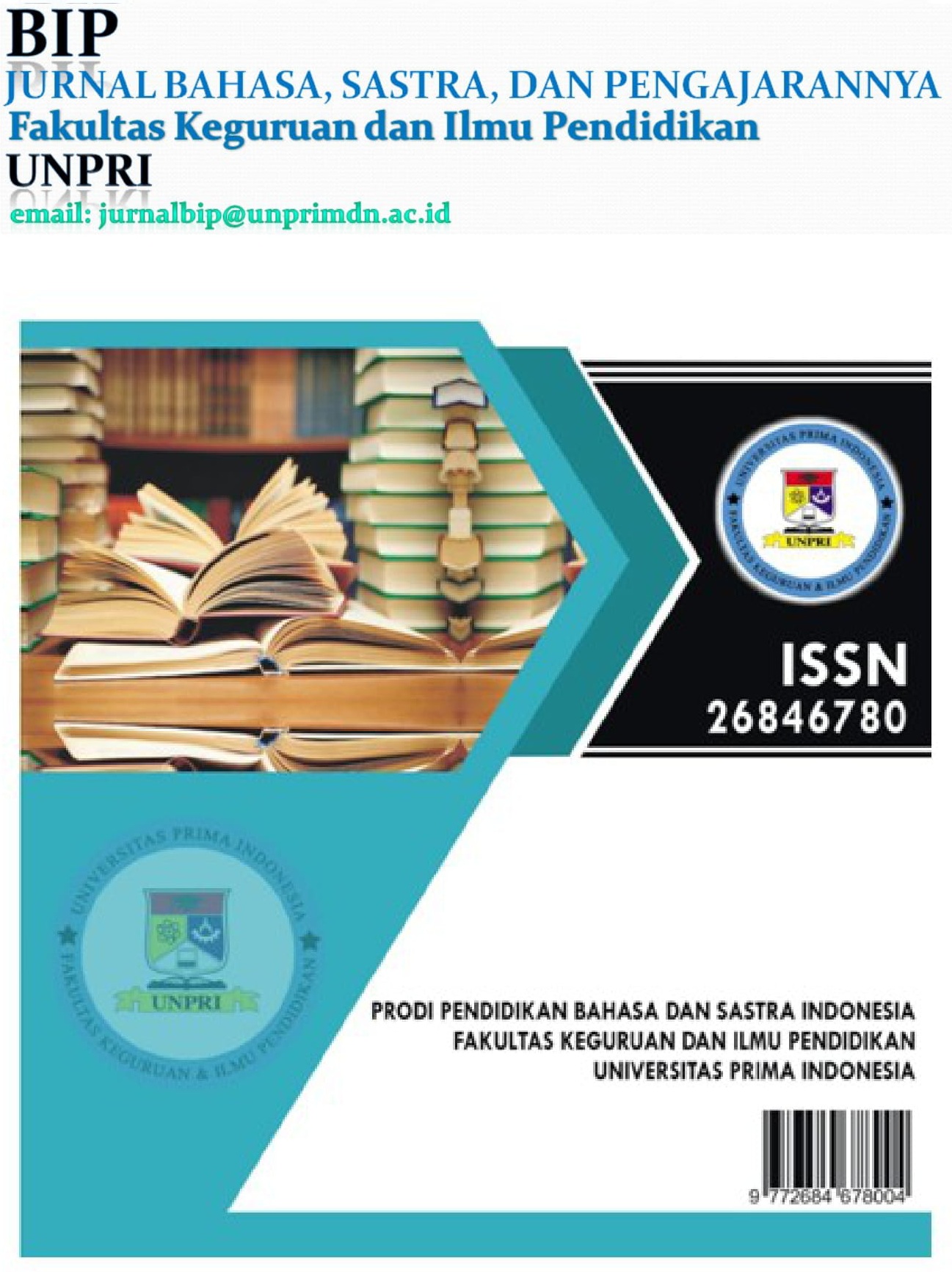Rhetoric in Video Uploads by the Detective Doctor Account on TikTok and Its Implications for Indonesian Language Learning in Vocational Schools
##plugins.themes.academic_pro.article.main##
Abstract
This research is motivated by social media such as TikTok in the dissemination of information owned by Dokter Detektif to reveal health cases using rhetorical techniques to improve students speaking skills. This study aims to describe the rhetorical techniques used in the video uploads of the Dokter Detektif account on TikTok social media and describe the implications of the research results for Indonesian language learning in vocational schools. This study uses a qualitative descriptive method. The data collection technique uses the listening method with the technique of free listening and speaking, note-taking, and documentation. The results show that in the video uploads of the Dokter Detektif account on TikTok social media, 54 rhetorical utterances consisting of ethos, pathos, and logos. Of the three logos appears most dominant, followed by pathos, and then ethos. The dominant of logos that the information conveyed in the video relies more on logic and facts to convince the audience. The results of the study have implications for Indonesian language learning in SMK Phase E on the Negotiation text material which can train speaking skills.
##plugins.themes.academic_pro.article.details##

This work is licensed under a Creative Commons Attribution-ShareAlike 4.0 International License.
References
- Aini, N. (2019). Bahasa Indonesia Sebagai Alat Media Komunikasi Sehari-Hari. Universitas Mitra Indonesia, 3.
- Aristoteles. (2018). Retorika (Seni Berbicara) (Aristoteles (ed.); Retorika). BASABASI. https://www.google.co.id/books/edition/Retorika_Seni_Berbicara/6J27DwAAQBAJ?hl=id&gbpv=0
- Azwardi. (2018). Metode Penelitian: Pendidikan Bahasa dan Sastra Indonesia. Syiah Kuala University Press.
- Dewanta. (2020). Pemanfaatan aplikasi Tik Tok sebagai media pembelajaran bahasa Indonesia. Jurnal Pendidikan Dan Pembelajaran Bahasa, 9(2), 79–85.
- Dhia, R. N., Pramesthi, J. A., & Irwansyah. (2024). Analisis Retorika Aristoteles Pada Kajian Ilmiah Media Sosial Dalam Mempersuasi Publik. Linimasa : Jurnal Ilmu Komunikasi, 4(1), 81–103. https://doi.org/10.23969/linimasa.v4i1.3530
- Farikh, M. R., & Arief, E. (2023). Unsur Retorika Stand Up Comedy Pandji Pragiwaksono dan Implikasinya Dalam Pembelajaran Teks Pidato di SMP. Jurnal Pendidikan Tambusai, 7, 27472–27481. https://www.jptam.org/index.php/jptam/article/view/11101%0Ahttps://www.jptam.org/index.php/jptam/article/download/11101/8797
- Hermaji, B. (2016). TEORI PRAGMATIK. Magnum Pustaka Utama.
- Saaty, A. (2020). The Rhetoric of Twitter in Terms of the Aristotelian Appeals (Logos, Ethos, and Pathos) in ESL/EFL Educational Settings. English Language Teaching, 13(5), 115. https://doi.org/10.5539/elt.v13n5p115
- Sudaryanto. (2015). METODE DAN ANEKA TEKNIK ANALISIS BAHASA. Universitas Sanata Dharma.
- Sugiyono. (2020). Metodologi Penelitian Kuantitatif, Kualitatif dan R & D.
- Tisa, M. (2023). Media sosial tit-tok dalam membangun citra diri (Analisis teori dramaturgi dan new-media). ISTIFHAM: Journal Of Islamic Studies, 1(3), 246–257. https://jurnal.seutiahukamaa.org/index.php/istifham/article/view/36 JournalHomepage:https://jurnal.seutiahukamaa.org/index.php/istifham

